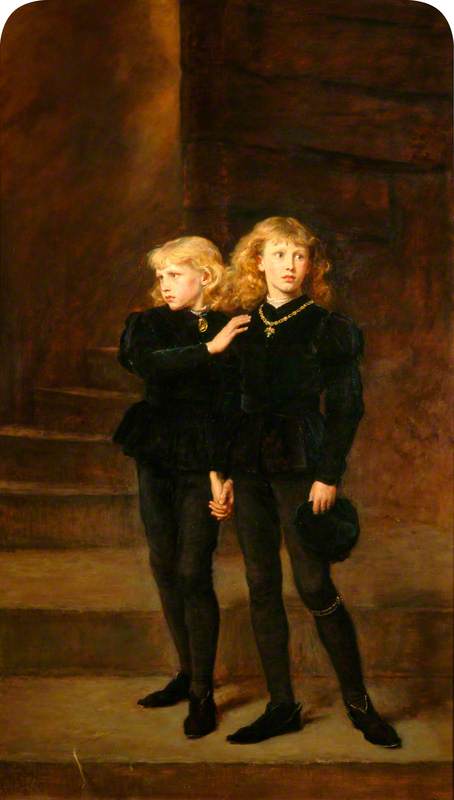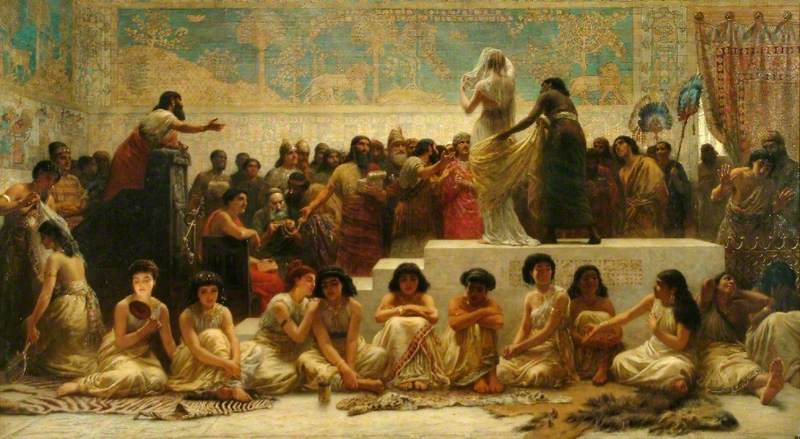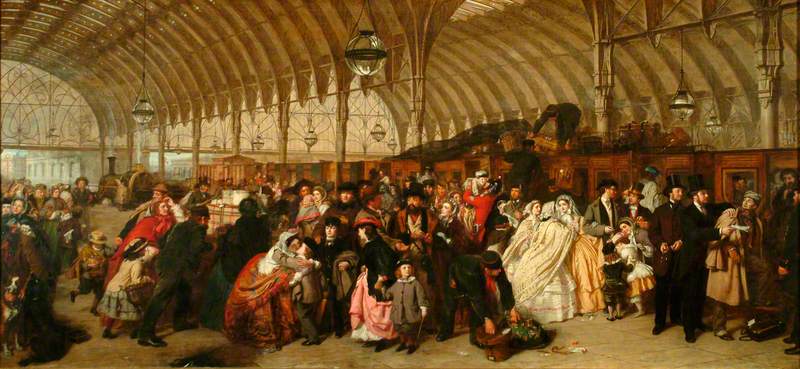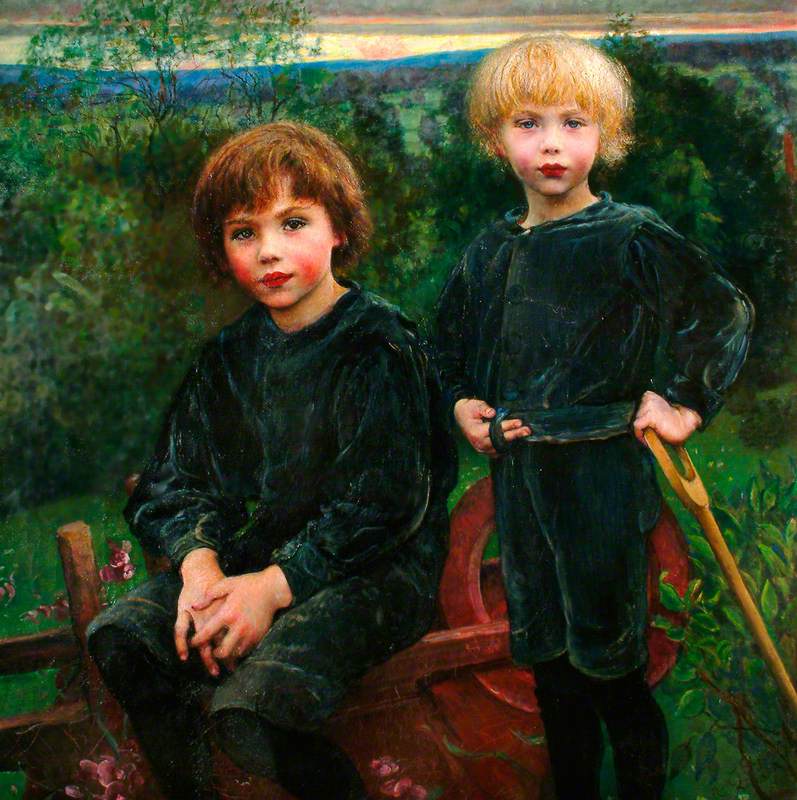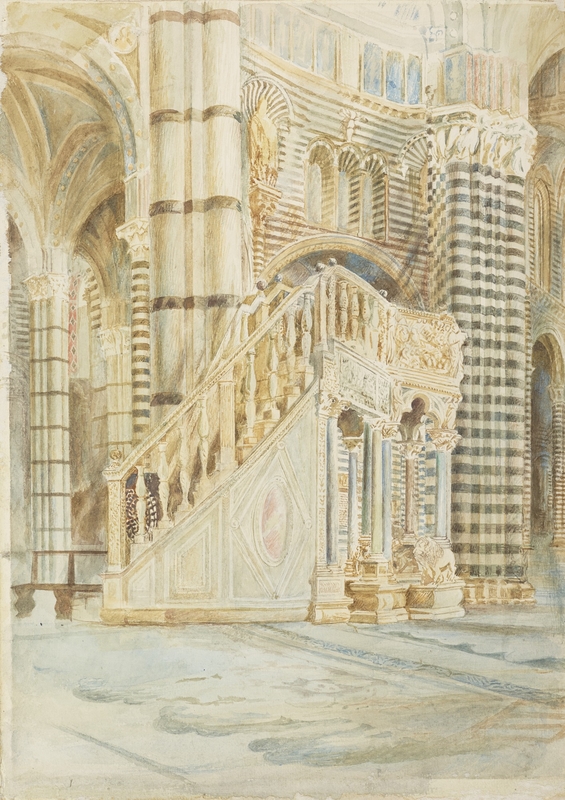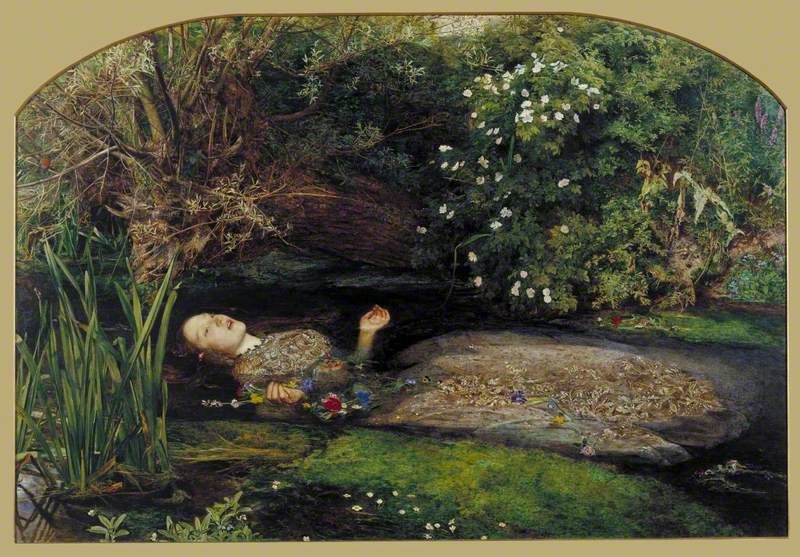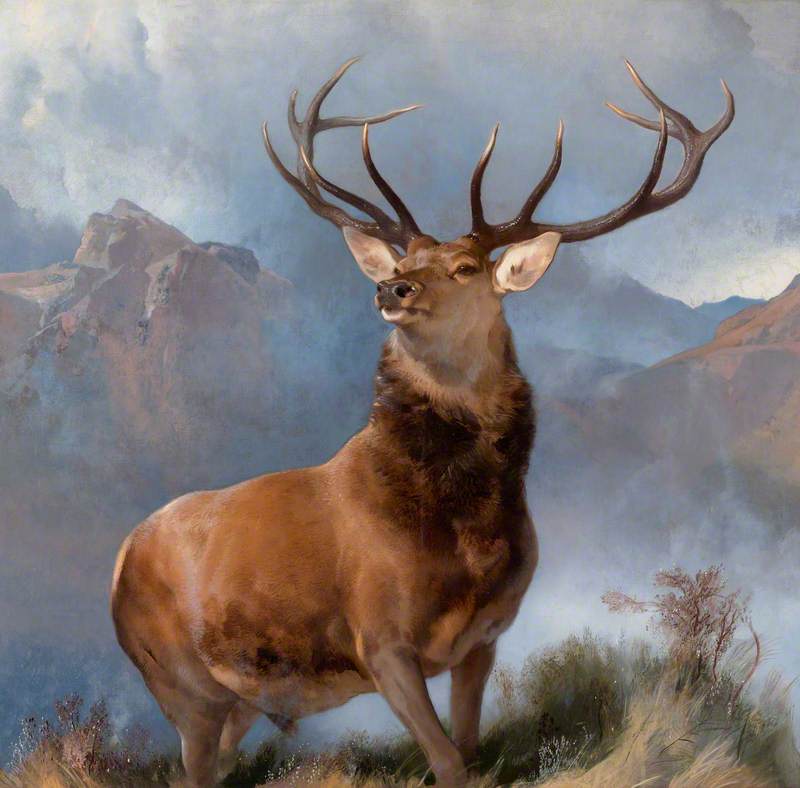Royal Holloway and Bedford New College, University of London, holds world-class paintings, sculptures, prints, drawings and watercolours including works by William Powell Frith, John Everett Millais and Edwin Landseer. At the core of the collection are the legacies of two Victorian collectors: the entrepreneur Thomas Holloway (1800–1883) and the artist Christiana Herringham (1852–1929).
Art Unlocked is an online talk series by Art UK in collaboration with Bloomberg Philanthropies. This Curation is based on a talk by Dr Naomi Lebens, Head of Cultural Services (College Curator), at Royal Holloway, University of London, on 30th November 2022. You can watch a recording of the talk on Art UK's YouTube channel.
-
The Princes in the Tower
The Princes in the Tower 1878Edward V and his younger brother Richard, the Duke of York disappeared from the Tower of London in 1483. The Victorians believed they had been murdered by their uncle, Richard III. Appointed as their guardian after their father’s death, he soon had them declared illegitimate and had himself crowned as King. Millais has painted the princes in the anxious moments before their death; the tension is heightened by the shadow at the top of the stairs, showing the arrival of their assassin.
This picture, and its companion piece Princess Elizabeth in Prison at St James's, are characteristic of Millais’ later works, which often focused on children. The paintings’ popularity reflects society’s increasing emphasis on the need to protect children.
John Everett Millais (1829–1896)
Oil on canvas
H 147.2 x W 91.4 cm
Royal Holloway, University of London
-
The Babylonian Marriage Market
The Babylonian Marriage Market 1875Edwin Long’s large painting depicts women in Babylon being sold as wives. Despite its ancient setting, it was inspired by debates surrounding Victorian women. In 1870 the Married Women’s Property Act was passed giving married women a legal status for the first time. Before this, on entering wedlock, a woman’s legal status ceased to exist. The new law, however, restricted how much of their earnings and inheritance married women could keep. Some campaigners felt that contemporary women, like those in the painting, were still no more than the possessions of their husbands. Throughout the 1870s, when this picture was painted, public debate about married women’s rights continued. These discussions led to the act being amended in 1882.
Edwin Long (1829–1891)
Oil on canvas
H 172.6 x W 304.6 cm
Royal Holloway, University of London
-
The Railway Station
The Railway Station 1862This bustling railway scene with its myriad of characters captures a snapshot of modern Victorian life. Amongst the crowd at Paddington Station there are a wealth of personalities and encounters to be discovered.
Frith weaves a tapestry of stories. Centre-left, a family kisses their sons goodbye as they leave for boarding school. This is in fact Frith and his own family, the painter’s self-portrait tucked in amongst the crowds. Moving to the right, a cab driver argues over his fare, whilst further along a bride bids farewell to her bridesmaids. On the far right-hand side of the painting, an arrest is made as two police detectives surprise their target, his foot on the carriage step alluding to his near escape.
William Powell Frith (1819–1909)
Oil on canvas
H 116.7 x W 256.4 cm
Royal Holloway, University of London
-
Man Proposes, God Disposes
Man Proposes, God Disposes 1864This painting of polar bears savagely attacking human remains, depicts an imagined episode in the tale of Sir John Franklin’s failed 1845 expedition to find the Northwest passage. Franklin was an experienced explorer and set off with two Royal Navy ships, 129 men and supplies for three years in 1845.
By 1848, when nothing had been heard of them, numerous search and rescue missions were sent out. Few found anything concrete until John Rae headed a mission in 1854. He spoke to the local Inuit community who had met some of the remaining crew after they had abandoned their ships, and who found the bodies of these men the following year. Most gruesome, however, was their discovery of crew members' bones which showed the marks of cannibalism.
Edwin Henry Landseer (1802–1873)
Oil on canvas
H 91.4 x W 243.7 cm
Royal Holloway, University of London
-
Head of Saint Catherine
Head of Saint CatherineAn active Suffragist, traveller and artist, Christiana Herringham was an influential figure in the Edwardian art world. Independently wealthy, she was one of the founders of the National Art Collection Fund, now known as Art Fund, a co-founder of the Society of Painters in Tempera (1901) and an original member of the Women’s Guild of Arts (1907).
Drawing from Catholic iconography, this arresting head study in tempera of St Catherine is copied from Sandro Botticelli’s Sant’Ambrogio altarpiece (c.1470). By isolating her from the wider, multi-figure, composition, Herringham creates an intimate portrait that emphasises the female saint’s gravitas and stature. It forms a pair with a Head of St Magdalene taken from the same source.
Christiana Jane Herringham (1852–1929)
Tempera on panel
H 45 x W 28.5 cm
Royal Holloway, University of London
-
Geoffrey and Christopher Herringham
Geoffrey and Christopher Herringham 1889Swynnerton met fellow artist and suffrage campaigner Christiana Herringham through their friendship with Millicent Fawcett, the President of the National Union of Women’s Suffrage Societies. Herringham and several of the women in Fawcett’s circle supported Swynnerton by buying her work and commissioning portraits from her, such as this portrait of Herringham’s sons. Swynnerton and Herringham were founding members of the Women’s Guild of Arts in 1907.
Herringham’s two sons are shown taking a rest from gardening as the sun sets in the background. Their clothes and outdoor activities suggest that Herringham followed the progressive approach to parenting favoured by many involved in the Arts and Crafts Movement.
Annie Louisa Swynnerton (1844–1933)
Oil on canvas
H 91.5 x W 91.5 cm
Royal Holloway, University of London
